CMDC has worked in collaboration with Sreekanta Das from the University of Windsor.
Supporting Innovation through Research Partnerships
Work has been conducted on the following projects:
Stack Pattern Masonry Beams
Project Summary:
Clause 11 of the Canadian standard, CSA S304-14 currently does not allow stack pattern masonry beams to be designed and built with the provisions laid within. However, many architects opt for the stack pattern masonry look for aesthetic purposes not realizing the structural limitations it has. As a result, designers are placed in precarious position trying to reconcile the selected masonry pattern with the requirements and limitations of CSA S304.
Since the head joints in stack pattern masonry line up vertically, it is believed that this construction is weaker than the traditional running bond construction. However, since masonry beams must be fully-grouted, the effects of aligned head joints can be mitigated by increasing the grouted area of the units and the horizontal grout continuity in the beam.
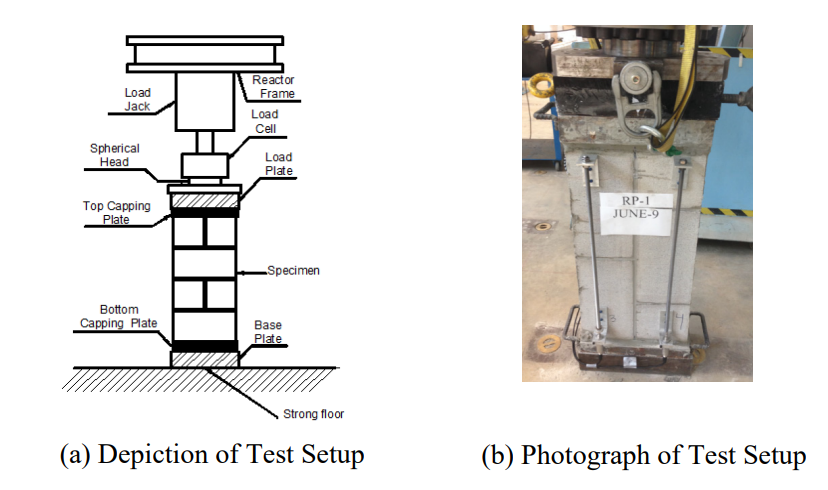
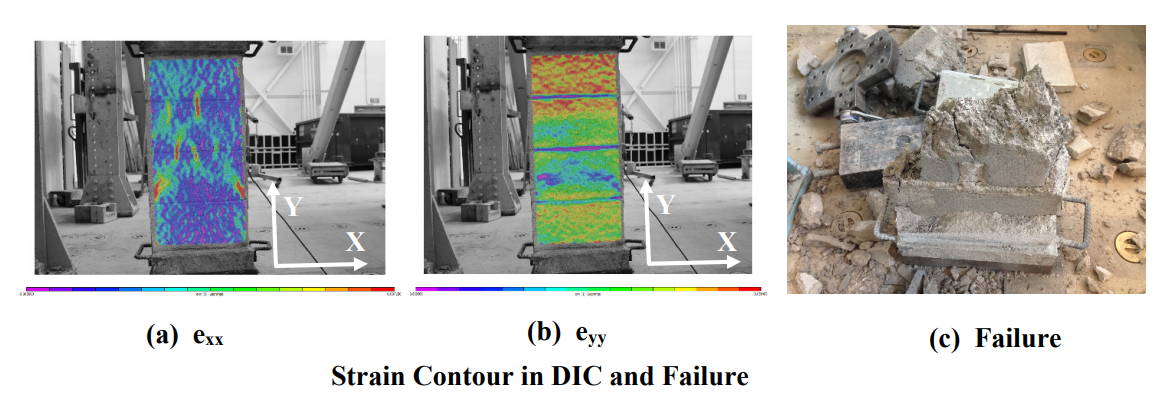
Select Journal Articles:
Zohrehheydariha, Jamshid, Sreekanta Das, and Bennett Banting. “Effect of unit bonding patterns on the structural performance of loadbearing concrete block masonry beams.” Journal of Structural Engineering 145, no. 1 (2019): 04018233.
Heydariha, Jamshid Zohreh, Sreekanta Das, and Bennett Banting. “Effect of grout strength and block size on the performance of masonry beam.” Construction and Building Materials 157 (2017): 685-693.
Select theses and HQP:
Jamshid Zohrehheydariha: https://scholar.uwindsor.ca/etd/7314/
Shear Resistance of Masonry Beams and the Chi Factor
Project Summary:
Masonry design standards require stirrups to be in contact with horizontal reinforcement. The placement of shear stirrups in beams built with narrow masonry concrete blocks becomes challenging due to cell changes as the block size reduces. Similarly, the smallest standard shear reinforcing bar size (i.e. 10M rebar) with a standard hook is complicated for a mason to achieve in the field.
Hence, this study was carried out to investigate the feasibility of using 8 mm steel bars and readily available bed joint wire (i.e. steel wire mesh) mesh which is commonly used as a horizontal reinforcement, as potential shear (vertical) reinforcement alternatives to enhance the flexural capacity and reduce the shear crack of masonry concrete beams.
The findings from this study also showed that the Canadian masonry design standard value for the chi (χ) factor is potentially conservative.
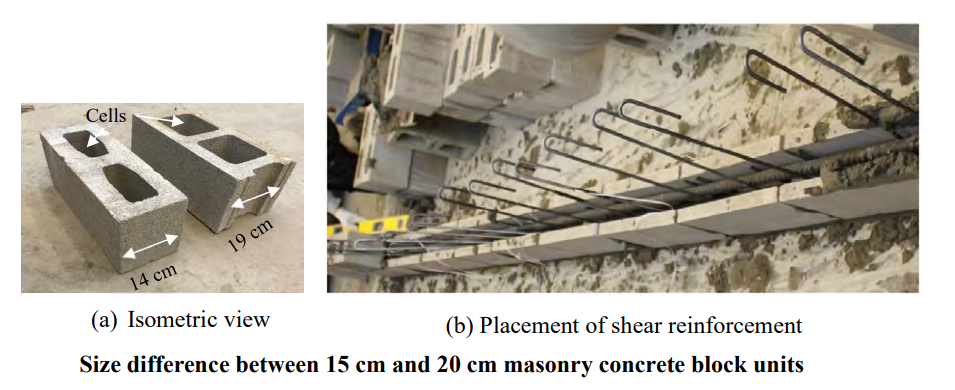
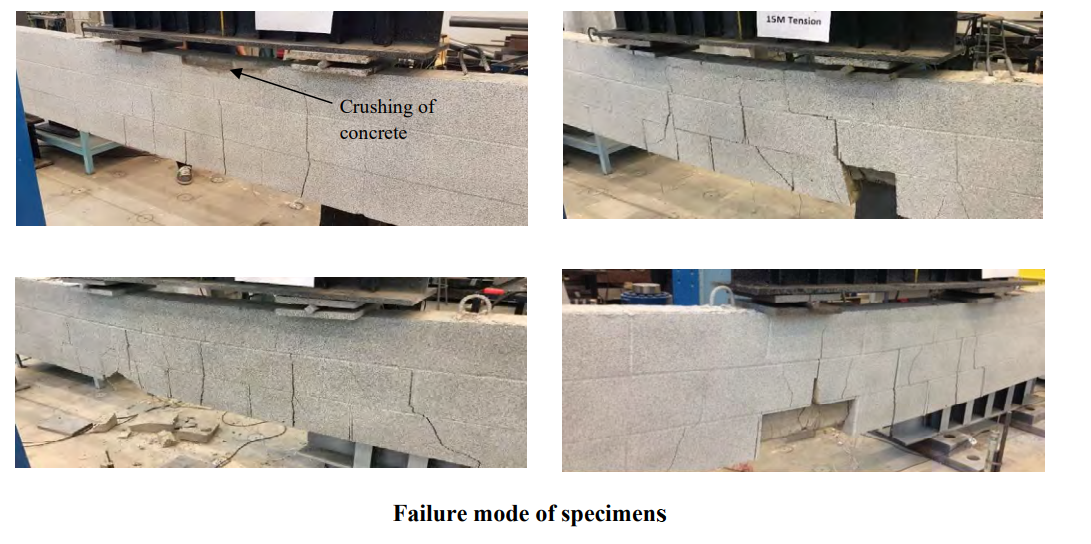
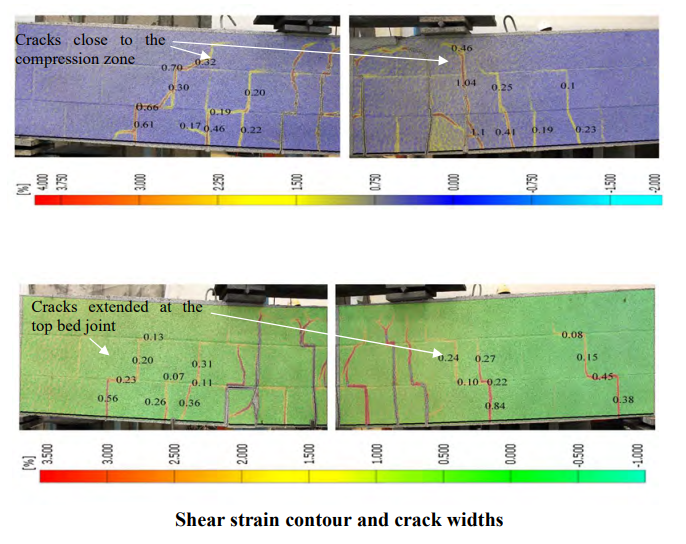
Select Journal Articles:
Penales, Jeeric, Jamshid Zohrehheydariha, Sreekanta Das, and Bennett Banting. “Structural Behavior of Masonry Beams with Alternative Shear Reinforcement.” Journal of Structural Engineering 147, no. 3 (2021): 04021002.
Select Theses and HQP: :
Jeeric Penales: https://scholar.uwindsor.ca/etd/8176/



